The images contained in the Utpictura18 database belong to a cultural environment where the difference between text and image is irrelevant, or secondary: images give themselves to be read, and reference to theater, a visual spectacle, is omnipresent in texts. The models and devices manipulated by representation can therefore only be understood in a permanent circulation between texts, images, performances and music.
But there's more: should Roland, Angélique and Médor be considered in our cultural heritage as figures in a text by Ariosto, an engraving in an illustrated book, a painting or tapestry, a ballet, a lyric tragedy by Lully and Quinault, an opera by Vivaldi or Handel, a commentary by Diderot in one of his Salons?
Structural analysis, which fixes its object and details it according to the articulations imposed by the medium of its representation, fails to account for this circulation of models upstream of their material and technical realization. The point is to account for a certain way in which meaning functions, embodied sometimes as a narrative, sometimes as a theatrical or operatic scene, sometimes as an engraving or painting, sometimes as a decoration on a tapestry or screen.
.Semiology operates upstream of media, and therefore structures. By semiology, we mean the analysis of signs that constitute representation and form a system in the form of devices. The device articulates the material arrangement of objects, ideas and characters, and the symbolic configuration it metaphorizes. This material arrangement is put into perspective in the image, given to imagine in the text, put into space in the setting of a palace or a theater stage.
Critique et théorie
Archive mise à jour depuis 2008
Critique et théorie
Généalogie médiévale des dispositifs
Entre économie et mimésis, l’allégorie du tabernacle
Trois gouttes de sang sur la neige
Iconologie de la fable mystique
La polémique comme monde
Construire Sénèque
Sémiologie classique
De la vie à l’instant
D'un long silence… Cicéron dans la querelle française des inversions (1667-1751)
La scène et le spectre
Dispositifs contemporains
Résistances de l’écran : Derrida avec Mallarmé
La Guerre des mondes, la rencontre impossible
Dispositifs de récit dans Angélique de Robbe-Grillet
Disposition des lieux, déconstruction des visibilités
Physique de la fiction
Critique de l’antimodernité
Mad men, Les Noces de Figaro
Le champ littéraire face à la globalisation de la fiction
Théorie des dispositifs
Image et subversion. Introduction
Image et subversion. Chapitre 4. Les choses et les objets
Image et subversion. Chapitre 5. Narration, récit, fiction. Incarnat blanc et noir
Biopolitique et déconstruction
Biographie, biologie, biopolitique
Flan de la théorie, théorie du flan
Surveiller et punir
Image et événement

